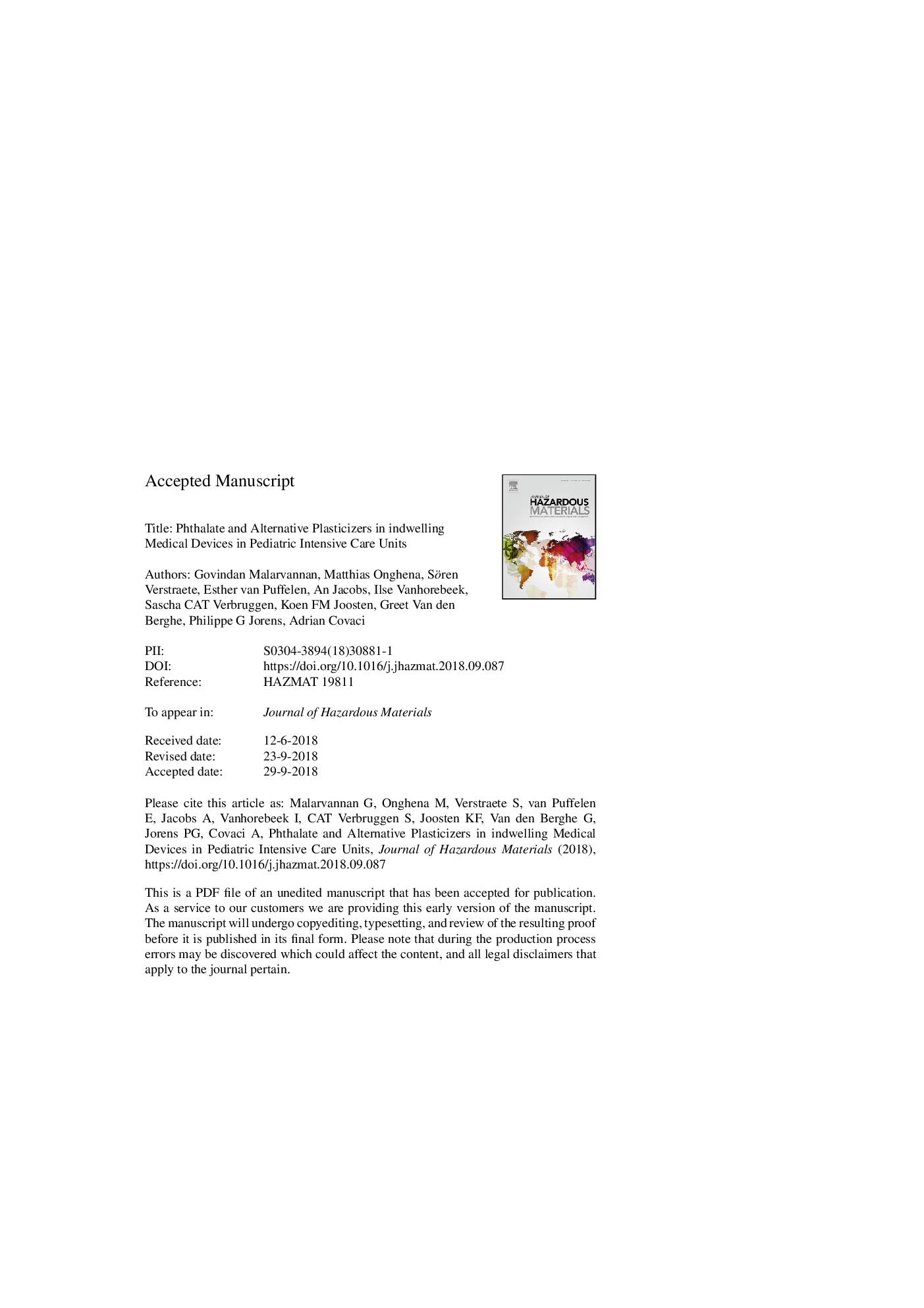| Article ID | Journal | Published Year | Pages | File Type |
|---|---|---|---|---|
| 11009888 | Journal of Hazardous Materials | 2019 | 25 Pages |
Abstract
The present study aimed to identify plasticizers present in indwelling plastic medical devices commonly used in the pediatric intensive care unit (PICU). We have analyzed a wide range of medical devices (nâ=â97) daily used in the PICUs of two academic hospitals in Belgium and the Netherlands. Identified compounds varied between the samples. Most of the indwelling medical devices and essential accessories were found to actively leach phthalates and alternative plasticizers. Results indicated that DEHP was predominantly present as plasticizer (60 of 97 samples), followed by bis(2-ethylhexyl) adipate (DEHA, 32 of 97), bis(2-ethylhexyl) terephthalate (DEHT, 24 of 97), tris(2-ethylhexyl) trimellitate (TOTM, 20 of 97), and tributyl-O-acetyl citrate (ATBC, 10 of 97). Other plasticizers, such as di-isononyl-cyclohexane-1,2-dicarboxylate (DINCH, 2 of 97), di-isononyl phthalate (DiNP, 4 of 97), di(2-propylheptyl) phthalate (DPHP, 4 of 97) and di-isodecyl phthalate (DiDP, 2 of 97) were detected in < 5% of the investigated samples. Several devices contained multiple plasticizers, e.g. devices containing TOTM contained also DEHP and DEHT. Our data indicate that PICU patients are exposed to a wide range of plasticizers, including the controversial DEHP. Future studies should investigate the exposure to APs in children staying in the PICU and the possible health effects thereof.
Keywords
Related Topics
Physical Sciences and Engineering
Chemical Engineering
Chemical Health and Safety
Authors
Govindan Malarvannan, Matthias Onghena, Sören Verstraete, Esther van Puffelen, An Jacobs, Ilse Vanhorebeek, Sascha C.A.T. Verbruggen, Koen F.M. Joosten, Greet Van den Berghe, Philippe G. Jorens, Adrian Covaci,
